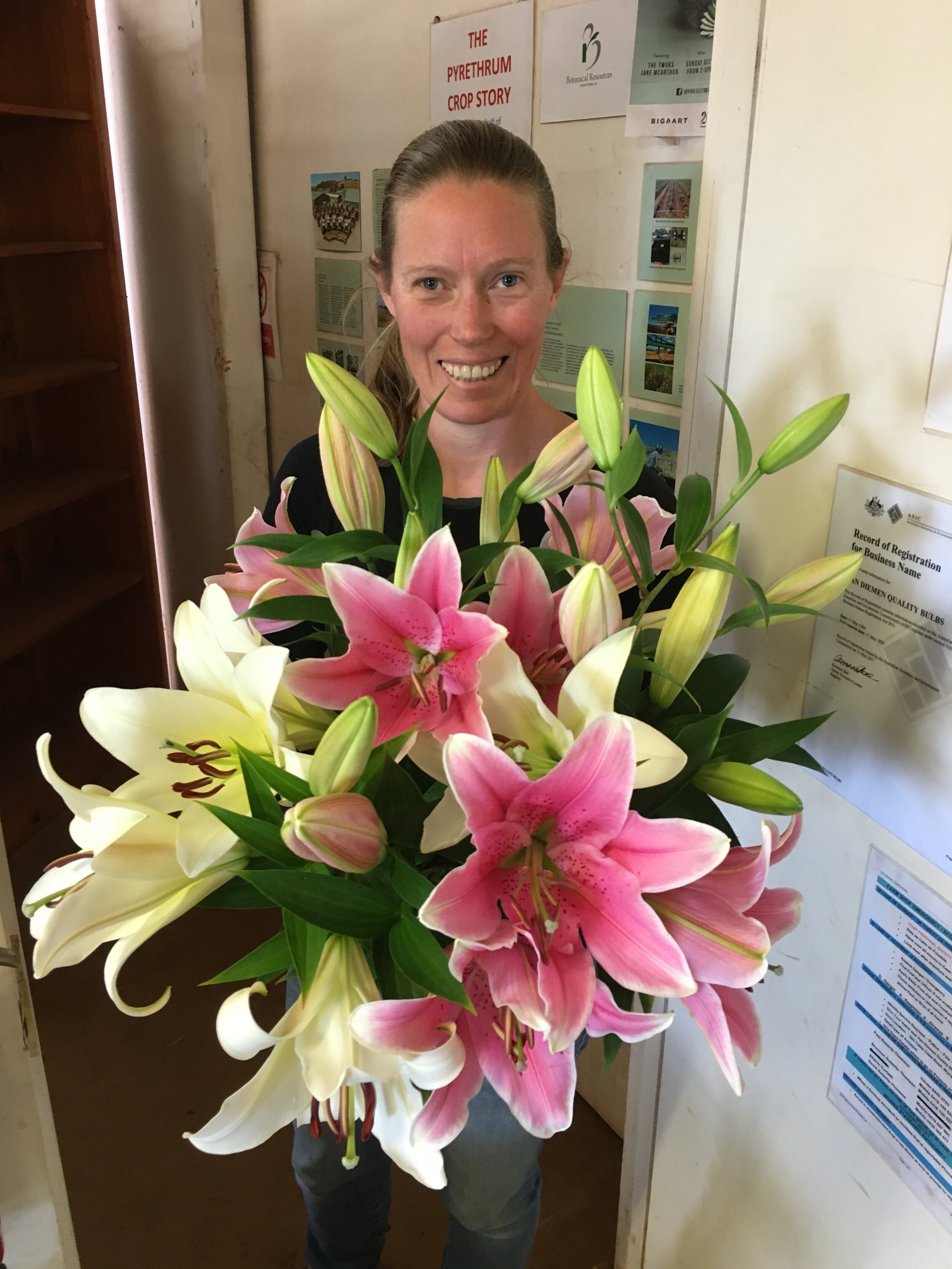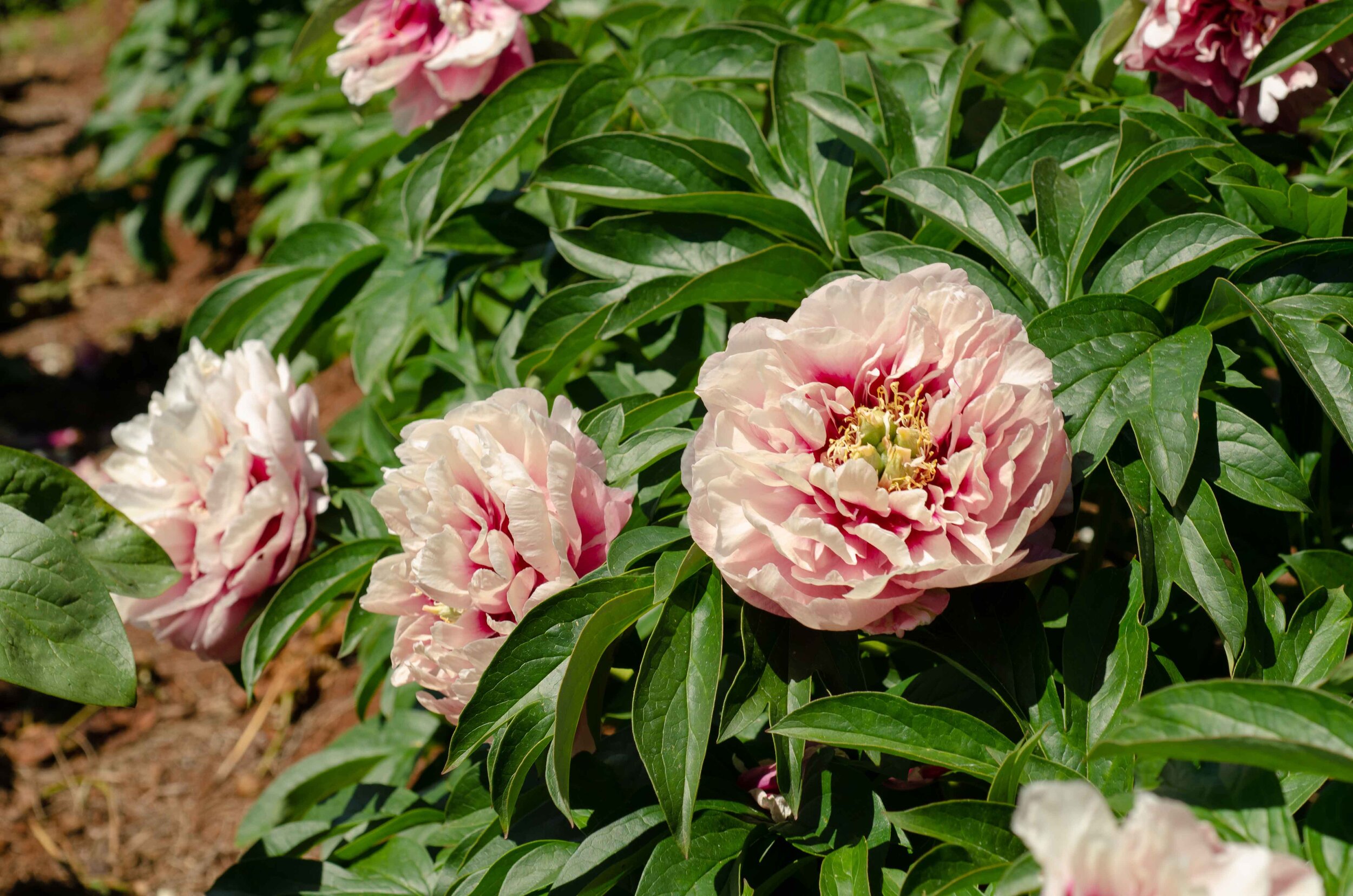
THE TULIP FARM
Our business, Van Diemen Quality Bulbs, operates from Table Cape Tulip Farm, which is situated in a truly iconic location on the North West coast of Tasmania.
Table Cape is an extinct volcanic vent dominating the coastline close to the town of Wynyard. Its 180m cliffs drop away into Bass Strait and Table Cape Tulip Farm is perched on the top.
During late September through to mid October the farm explodes with colour. People come from far and wide to see this spectacle and delight at walking amongst the tulips. We understand that they are the largest tulip fields in the Southern Hemisphere that you can actually wander in.
It is a lure for photographers who have the opportunity to take fantastic shots utilising backdrops of Bass Strait, the lighthouse and the surrounding rich farmlands to showcase the vista of colourful blooming fields.
THE FAMILY BUSINESS
There is a proud heritage of agriculture and horticulture at the Table Cape Farm. Our family (Roberts-Thomson) settled on the Cape in 1910 and over subsequent generations have cleared the land, grown various vegetables and stud farmed cattle and sheep.
In 1984, Paul & Bronwen Roberts-Thomson imported their first tulip bulbs from Holland and since then Van Diemen Quality Bulbs has continued to expand and are now one of the major producers of not only tulip bulbs, but also Dutch iris and liliums.
We really enjoy giving people the opportunity to grow these amazing plants and our hands-on experience and expertise puts us in the ideal position to nurture and encourage you to become successful bulb growers in your own right. For more information see the Van Diemen Quality Bulbs website.
The Roberts-Thomson family
About Tulips
Tulips originated in the mountains of Iran and Turkey. The have been made famous by the Dutch who have grown and hybridized these beautiful bulbs for about 4 centuries.
Tulips need a cold winter and long, cool spring for best growth but can be grown to flower spectacularly in the first year in all but the warmest regions of Australia.
Tulips multiply slowly. Even the most successful tulip multiplication is normally less than 3x per year (by weight) and is often less than 2x per year.
There is a huge range of tulip flowers from small to large, single to double, fringed and parrot and in all colours except a true blue and a true black. “Black” tulips are really a very dark shade of purple.
The Farm Tulip Cycle
· Planting in May – plants quickly put down roots
· Emergence in August-September
· Rapid growth in September
· Crop inspections to check that varieties are not mixed up or diseased occur from September to November
· Flowering in October
· De-heading in late October
· Most of the growth of new bulbs is in October-November
· Harvest in December
· Cleaning and Grading in December-January
· Despatch to wholesale clients in January-February
· Mail Order Despatch in March-April
· Cleaning planting stock in March
About other bulbs
As well as tulips, we grow about 14 ha of other bulbs including liliums, dutch iris, hyacinth, alliums and some daffodils. More recently, we are working to put some Tasmanian bred dahlias into our spring Mail order range and a range of farm-raised perennials for all 3 catalogues.
Most of our bulbs are destined for Australian home gardeners. We have been working very hard for some years to bring a good range of garden liliums to the market and this process is ongoing.
Cover crops
In recent years we have been looking to the health of our soil to increase quality and yield in our crops. The five principles of soil health that are guiding our current efforts are:
Cover the soil – to minimise wind and water erosion, reduce soil temperature and evaporation rates, suppress weed growth and provide habitat to beneficial organisms.
Minimise soil disturbance – to minimise oxidation of carbon and loss of soil microorganisms, especially fungi and earthworms.
Increase plant diversity - diverse plants produce a range of different root exudates which stimulate different microorganisms and therefore promotes a healthier and more resilient soil.
Always have a live root in the soil – living roots process carbon dioxide and sunshine tp provide carbon and energy to the soil.
Integrate livestock into the system – Introducing grazing animals to agricultural systems helps balance the carbon:nitrogen ratio by returning nitrogen to the soil and reduces biomass before planting of the following crop . It also provides livestock with a more nutritious diet.
These principles are intended to be applied together to maximise the soil building impact. In practice this means including mixed crops of both warm and cool season grass and broadleaf species in our crop rotation, often before our bulb and other cash crops.
Pyrethrum
The green/grey bushes you see growing on the farm are pyrethrum, a white chrysanthemum daisy that produces a natural insecticide, pyrethrin. The crop is perennial, usually lasting 2-3 years. North West Tasmanian company Botanical Resources is a world leader in the supply of pyrethrins, the majority of which is grown in North West Tasmania.
Poppies
Poppies are sown in Spring, flower in early summer and are harvested in mid to late summer. Poppy flowers are a predominant part of the country side in Tasmania around Christmas. Poppies produced in Tasmania supply a large proportion of the world’s (legal) opium. Opium is used to produce drugs such as morphine and codeine.
Peas
Peas are planted in late Winter and harvested in late Spring. Northern Tasmania produces most of Australian peas sold frozen in supermarkets around the country. These peas are processed on the North West coast.
Grain
North West Tasmania is known for producing high yield, high protein cereal crops. Cereal crops like barley and wheat are planted annually in Winter for harvest in Summer. In the past few years other seed crops such as linseed, buckwheat and hemp have also been introduced to the crop rotation on the farm.








